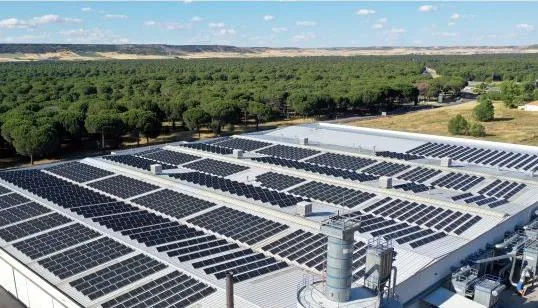
- The Institution is moving forward with its commitment to support its customers with decarbonisation, setting targets for 2030 in four carbon-intensive industries: Electricity, Oil & Gas, Cement and Coal
- The methodology for setting targets focused on the sectors driving the greatest climate impact and, within those sectors, on the stage of the production chain where CO2 reduction could generate the most impact on the global reduction of emissions
- Thanks to its track record of financing and investing in renewable energy projects since the 1990s, Sabadell’s energy portfolio currently has the lower level of emissions intensity compared with the main European peers that have published commitments to 2030
- To support its customers in their ecological transition, in 2021 Banco Sabadell set out its ESG action framework, “Sabadell’s Commitment to Sustainability”, which includes the target of mobilising 65 billion euros in sustainable finance by 2025
Banco Sabadell takes another step forward in its drive to combat climate change and presents its decarbonisation targets to impact on those industries which, at a global level, are the most carbon intensive. By taking this action, the Bank prioritises the transition of its loan book based on the targets set out in the Paris Agreement and continues to promote its partnership with major climate commitments, such as the Net-Zero Banking Alliance (NZBA), part of the United Nations Environment Programme (UNEP FI). This involves setting out decarbonisation pathways to reduce the carbon footprint of its credit and investment portfolio, by limiting the global temperature rise since the pre-industrial age to +1.5ºC, with the aim of reaching climate neutrality in 2050.
Decarbonisation targets
As part of its climate transition strategy, the Bank has prioritised target-setting for the Electricity, Oil & Gas, Cement and Coal industries. In the words of Elena Carrera, Banco Sabadell’s Director of Sustainability and Efficiency: “Banco Sabadell is moving forward with its commitment to support its customers with decarbonisation, setting targets for 2030 for the industries that produce the greatest climate impact, focusing on the stage of the production chain where CO2 reduction could generate the most impact on global emissions reduction.”
Specifically, the activities covered by the decarbonisation targets are focused on: 1) the Electricity industry, in businesses whose main activity is generating electricity, 2) the Oil & Gas industry, in businesses associated with upstream and downstream hydrocarbons (including refining activity), 3) the Cement industry, focusing on companies with manufacturing activities, and 4) the Coal industry, in companies with activities related to coal mining.
For the Electricity industry, the Bank’s current starting point is 61 kg CO2e/MWh, far below the level of intensity anticipated in the reference scenario (IEA NZE 2050) for the base year. This level of intensity is also lower than the targets set for 2030 by the main European players, being within the range of intensity anticipated by the reference scenario for 2036-2037.
This situation is the result of the Bank’s specialisation in renewable energy that it began in the 90s by financing and investing in renewables projects, particularly those based on wind and solar technology. Against this backdrop, the Bank aims to maintain the intensity of its CO2 emissions at a range of between 85-45 kg CO2e/MWh in order to ensure that it remains by the side of all its customers during their transition process. This strategy is aligned with the REPowerEU plan and the ambitious energy targets of the European Union in relation to the buildout of renewable electricity generation. The Bank will continue to take action with the same diligence it always has, undertaking to remain a standard-bearer for financing and investing in energy and technology that can serve as alternatives to fossil fuels.
In line with the reference scenario related to the Oil & Gas industry, the Bank has set a target to reduce total funded emissions by 23%, while in the Cement industry it has made a commitment to reduce emissions intensity per output tonne by 23%.
In the Coal industry and in line with its expectations as a member of the Net-Zero Banking Alliance (NZBA), the Bank will have no exposure to coal mining activities in 2030.
Main levers and upcoming milestones
To reach the targets proposed to achieve a low-carbon economy, the Bank has enhanced its sectoral specialisation and has developed management tools. To support its customers with climate transition, the Bank has specific funding solutions and ongoing advisory services offered by specialised teams. With this challenge in mind, in 2021 the Bank set itself the target of mobilising 65 billion euros in sustainable finance by 2025.
Going forward, Banco Sabadell plans to continue setting additional interim targets for other carbon-intensive industries identified by the Net-Zero Banking Alliance (NZBA). The Bank will also report on the progress made with the commitments it has undertaken and it will unveil an action plan to ensure it meets the aforesaid targets.
For more information on decarbonisation targets, see the report published on the corporate website, in the section entitled Commitment to Sustainability.
